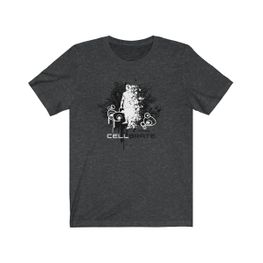Brain cancers are notorious for avoiding the effects of medications targeted to clear them. One such brain cancer is known as Glioma. Glioma is a type of tumor that occurs in the brain and spinal cord. Glioma tumors usually begin in the gluey supportive cells called glial cells that surround nerve cells and help them to function.
Three types of glial cells can produce tumors. Gliomas are classified according to the nature of glial cell involved in the tumor, as well as the tumor's genetic features, which can help predict how cancer will behave over time and the treatments most likely to work.
A study performed by researchers at Columbia University Irving Medical Center find that slow-growing brain tumors arising in patients affected by neurofibromatosis type 1 (NF1) may benefit from immunotherapy; making use of the immune systems natural ability to clear cancer. Neurofibromatosis type 1 (NF1) is a common tumor predisposition syndrome in which glioma is one of the common tumors.
The study is detailed in the online publishing of Nature Medicine – describing that gliomas are hard to cure, remaining resistant to chemotherapeutic approaches and radiotherapy. Typically, glioma tumors are in hard to reach areas of the brain as well, making surgery a poor option.
The team of researchers focused their goals on identifying specific weaknesses of the NF1 brain tumors because until now, little has been known about the molecular changes that occur in NF1 brain tumors. The research carried out an in-depth analysis of tumor samples from 56 patients. The examples served as an inventory of information about genetic, epigenetic and immune alterations of NF1 gliomas. "This inventory will give us a much better idea of how to design individualized treatments," shares Columbia’s Antonio Iavarone, MD, lead researcher. "But two findings from our study may have immediate clinical repercussions for NF1 patients."
One of the identified factors of brain tumors that makes them so difficult to clear is that immune cells called macrophages surround them. Macrophages are responsible for locating foreign material and destroying it, presenting antigen, and regulating the immune system with the production of cytokines.
The team found that in youth that develop NF1 tumor cells, there aren’t a lot of macrophages present, and the tumor is slow-growing. The study reveals that in the case of the slow-growing tumors, there are neoantigens that will trigger an immune response.
"We were surprised to find that approximately 50 percent of the slow-growing NF1 gliomas contained large numbers of T cells that can destroy cancer cells," says Anna Lasorella, MD and fellow researcher. These "high immune" tumors are good candidates for treatment with immunotherapy, which could unleash the T cells, and clinical trials are now being planned.
Concerning older patients, the research shows that gliomas are much more aggressive and surrounded by many macrophages. Interestingly, the study also reveals a genetic defect that may leave them more sensitive to DNA damaging therapies.
"If we treat the aggressive tumors with DNA-damaging agents, we might be able to introduce even more DNA errors that eventually prevent the cells from replicating and stall the growth of the tumor," says Iavarone.
Sources: Nature Medicine, Science Daily, Mayo Clinic, YouTube
-
MAY 07, 2024Is It Anti-RNP or Anti-Sm/RNP?
- See More
-
APR 30, 2024Immuno-Oncology Virtual Event Series 2024
-
MAY 07, 20243rd International Biosecurity Virtual Symposium
-
JUN 06, 2024The Future of Scientific Conferencing
- See More


















































